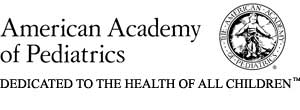

The Internet, sometimes called the information superhighway, is a giant network of computers that connects people and information all over the world. The term on-line means being connected to the Internet. The World Wide Web (often shortened to WWW or the Web) is the most popular part of the Internet because it includes pictures and sound as well as text.
Not long ago, computers were huge machines that occupied entire rooms. Today's desktop and laptop computers give us our own personal windows to the world. The stunning growth of the Internet has placed knowledge and information at our fingertips. The possibilities for learning and exploring on the Internet are endless. Being able to use technology is fast becoming a requirement for success in today's society. Teaching your child the basic skills of working with computers will provide tools she will need in our changing world.
It is critical that your child have your guidance when learning to use the Internet. Even if your child is an experienced computer user, he needs your involvement, your experience, and your judgment. Although children can use the Internet to tap into the Library of Congress or view pictures of the surface of Mars, not all material on the Internet is appropriate for children. As a parent, you can guide and teach your child in a way that no one else can. Regardless of your technological know-how, you can make sure your child's experience on the Internet is safe, educational, and fun.
What can my child and I find on the Internet?
A computer that is connected to the Internet allows you to turn your home, community center, local library, or school into a place of unlimited information. The Internet can help you and your child do the following:
As the Internet grows, so does the trend of on-line advertising. Steer your child to non-commercial sites and other places that do not sell products to children. Teach your child to recognize the advertising and marketing of products and services. Encourage your child to think about who created the ads and why they are there. Discuss questions like the following:
There is an almost unlimited amount of information, products, and services available on the Internet, and it continues to grow. It is important to be aware of the potential risks involved in going on-line. By setting clear rules and using common sense, you can help your child take advantage of the vast resources the Internet offers, while at the same time having fun and staying safe.
Surfing the Net
When you go to the Internet, you may have a specific address in mind or you may browse through the Web, just as you would a library or a catalog. This is often called "surfing the Net." Following are several ways to get around on the Web:
Other internet uses
A word about...chat rooms
Many people visit chat rooms provided by commercial on-line services or IRC servers (Internet Relay Chat). Chat rooms are a way for a number of computer users to communicate with each other in "real time" - they are conversations that are instantly transmitted. For example, if you type a message and send it, it will be seen instantly by everyone else in the chat room and they can respond just as quickly.
Chat rooms can be fun and interesting. However, as in newsgroups, there is usually no supervision. Many people will be rude, mean, offensive, or dishonest. If you allow your child to use chat rooms, insist she follows the rules listed in "Setting Rules for Internet Use." Most importantly, your child should never give out personal information or agree to meet someone she has met in a chat room. Always supervise your child if she visits a chat room, or do not allow access at all. Check with your service provider about blocking chat room use.
The recommendations in this statement do not indicate an exclusive course of treatment or serve as a standard of medical care. Variations, taking into account individual circumstances, may be appropriate.